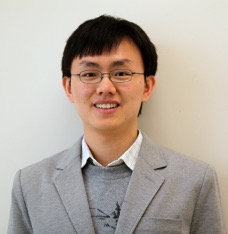Prof. Sheng Xu, University of California San Diego
2021 Materials Research Prize for Young Investigators

Prof. Xu has made important contributions to the field of flexible electronics. Most recently, he invented a wearable ultrasonic technology that allows noninvasive monitoring of tissue far below the skin surface. He also developed new growth methods for materials used in flexible high-performance electronics.
General goal of his work: developing new materials and fabrication strategies to flexible electronic devices for applications in energy, robotics, and healthcare. In his own words, “we make hard materials soft and use them to build electronics.”
Biography
Dr. Sheng Xu is currently an assistant professor at the University of California San Diego. He received his B.S. in Chemistry from Peking University and Ph.D. in Materials Science and Engineering from Georgia Institute of Technology, followed by postdoctoral studies in the Materials Research Lab at the University of Illinois at Urbana-Champaign. His group is interested in developing new materials and fabrication strategies for flexible energy harvesting and health monitoring devices. His research has been presented to the U.S. Congress as a testimony of NIH’s extramural research. He has been recognized by many awards, including MIT Technology Review 35 Innovators Under 35, Wellcome Trust Innovator, Sloan Fellowship, IEEE Sensors Council Technical Achievement Award, SPIE Rising Researchers, NIH Maximizing Investigators’ Research Award, NIH Trailblazer Award, and MRS Outstanding Early Career Investigator. He is a Kavli Fellow of National Academy of Sciences and a Frontier of Engineering of National Academy of Engineering. He serves Nano Research as a Young Star Editor.
Research Summary
Dr. Xu made two contributions to flexible materials. The first is the development of wearable ultrasonic devices for sensing deep tissues. Soft wearable devices that can noninvasively and continuously acquire physiological signals from the human body represent an important trend for healthcare. The signals conventional wearable electronics can monitor are limited to either the surface or very shallow (<1 cm) below the skin. There are a lot more activities in deep tissues that have a stronger and faster correlation with the diseases and symptoms of the human body. Dr. Xu invented a wearable ultrasonic technology that allows noninvasively and continuously monitoring activities 14 cm below the skin surface, opening a new sensing dimension to the detection range of existing wearable devices. The second is the demonstration of chemical epitaxial growth of single-crystal hybrid halide perovskites. Hybrid halide perovskites hold numerous potentials for next-generation electronic and optoelectronic devices due to their remarkable carrier dynamics. Existing studies are mainly focused on polycrystals, since controlled growth of high-quality single crystals is challenging. Dr. Xu devised strategies that enabled the first chemical epitaxial growth of single-crystal hybrid halide perovskites with controlled locations, morphologies, orientations, and strains. By a lifting-off approach, single-crystal thin films can be transferred from the epitaxial substrate to general flexible substrates. This approach enables broad opportunities for hybrid halide perovskite materials based flexible high-performance electronic and optoelectronic devices.